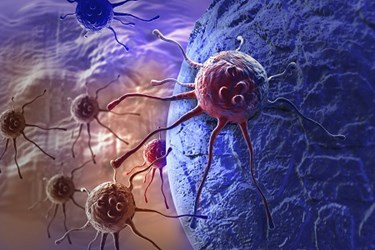Cancer Cells Grow On Soft Beds, Study Finds

A team of scientists at the University of Illinois reported that tumor-repopulating cells prefer soft beds in which to metastasize rather than hard ones. The researchers hope that the research will help pave the way for new types of drugs that target the renewal pathway of the cancer cells.
Tumor-repopulating cells (TRCs) are a self-renewing subpopulation of cancer cells that play a key role in disease progression. Ning Wang, a professor of mechanical science and engineering at the University of Illinois, with colleagues in China studied TRCs to understand the underlying mechanisms of their self-renewing capability.
Professor Wang explains that the root of cancer relapse remains a mystery. “Why are there a few cells left that can come back stronger? We thought cancer cells may have some properties in common with stem cells, which allows them to metastasize to different tissues. Normally, if you take a liver cell and put it in your lung, it will die. But an undifferentiated cell will live.”
Using a technique Wang and his group published two years ago, they isolated and examined TRCs from a melanoma culture to see how the mechanical environment surrounding the cells affected their ability to multiply and produce new tumors. The team grew the cells on gels with various degrees of stiffness. They found that TRCs placed in very soft gels grew and proliferated as anticipated. TRCs placed on harder gels neither grew nor died, but became dormant instead. When transferred to a less stiff gel, the TRCs from the hard gel bed ‘woke up’ and began to spread.
Professor Wang thinks that the cells’ properties of dormancy and reawakening based on their mechanical environment may help explain why soft tissues are the most vulnerable to metastasis. “We have many different types of organs where solid tumors originate, but if you look at the metastasized sites, the majority [is] in soft tissues. Brain, lung, liver and bone marrow, all soft. So it may not be coincidence. We need to do more research.”
The team’s findings appear in the journal Nature Communications.
